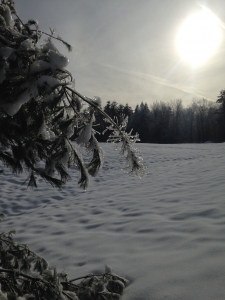 Approaching the woods, a gentle wind stirred the air. Snowballs, crystals, fairy dust, and wonder rose from the tree branches before falling to the ground lightly and playfully. The field was covered in a full, fresh layer of snow. It looked like winter but the temperature of the air and the depth of blue in the sky hinted towards spring. This snow was not destined to last long. It is late winter and the season is more fickle than ever.
Approaching the woods, a gentle wind stirred the air. Snowballs, crystals, fairy dust, and wonder rose from the tree branches before falling to the ground lightly and playfully. The field was covered in a full, fresh layer of snow. It looked like winter but the temperature of the air and the depth of blue in the sky hinted towards spring. This snow was not destined to last long. It is late winter and the season is more fickle than ever.
The pines and maples surrounding the field at the edge of the forest held piles of heavy snow. Some of the trees held the fresh snow as if in a gentle hug, happy for the temporary companionship. Others seemed burdened by the uninvited guest, holding the unwelcome weight as a burden. The oak trees, which also still held many of their leaves from the previous fall, seemed especially laden. With each gust though, each tree released a little more snow. As the wind whispered through the branches, I heard an audible sigh of relief as the trees let go of the snow.
I sat for a while with the little oak at the top of the drainage. I felt some kinship with this tree and its long, reaching branches. It will hold onto the leaves of the last growing season until emerging buds push them off in the spring. This oak, nestled out of the wind, will also hold the day’s snow longer than most of its neighbors. There does not appear to be any burden in this holding. This little tree seems designed to hold on. Its trunk is straight and solid. The branches grow low and wide. The fibers of each branch are dense. It clings to last season, embraces the snow of this season, and prepares for the growth of spring and summer ahead. This little tree declares that it is possible to have and hold it all.
Like the oak, I too attempt to hold — or at least juggle — it all. There is joy in this rich fullness. It can also be stifling and inhibiting. Dwelling on the regrets, mistakes and successes of the past does not leave space for recognizing the gifts of today. Attending to the longing, anticipation or worry for the future does not allow for living into the potential of each moment. When I am holding too much or too tightly, the present passes without notice and intent.
Holding on can also be can be comforting, serving us well from time to time. I remember helping Dad pack up his condo when he was moving to Maine. I picked up a candy dish that I had never seen before and asked him if he wanted to take it with him. He looked at it for a long time while I watched him drift far into his thoughts. Finally, he returned and said, “Yes, let’s take that. It reminds me of my grandmother.” We packed it up and it stayed by his bedside for the next three years. Dad had lost so much to dementia and would lose so much more. Holding on to that dish and any memories that it carried was a small and tender grace.
Now when I see that dish in my house, it reminds me of Dad. Specifically, it reminds me of holding him close and offering care during the years of his decline. And it reminds me of the paradox that was so strong at his death. After days by his bedside, I finally felt myself letting go of his barely living body. As I did, I remembered that I had felt the power of his spirit releasing into the world several days before he died. Noticing that I had been clinging to physical life and being intentional about letting it go, allowed my awareness of his persistent and expanding essence to return.
I see similar expansion in my boys as they explore the world and create their space within it. As they have become teenagers, they are taking longer, more independent steps into the world. Much of it now happens out of my sight, but the growing strength and freedom feels very similar to those days when they were mastering the monkey bars. It was important to stay close at first but, as strength and confidence grew, it was important to step further and further away. They needed to know that they were capable and that I trusted in their power and ability. They also needed to know that I was nearby if they wanted or needed me. Letting go is not the same as walking away. Letting go is an opening of hugging arms. Letting go honors both past and potential.
By now, the little oak in the drainage was beginning to release her snow. As the sun rose higher, the snow melted away one slow drip at a time. As I walked away from the tree, I began to walk a spiral in the middle of the field. The lithe trees at the edge of the field and the stiff, stoic oak at the top of the drainage had both offered a rich teaching. There are times for holding on and times for letting go.
As I wrapped into the spiral, I felt how closely connected the two actions are. Sometimes we are walking into the center, contracting, focusing and holding. At other times, we are walking towards the edges, expanding, stretching, and letting go. Holding on and letting go are expressions of love on the same continuum. The dance between them becomes the way that we nurture ourselves, our relationships, and the way that we live our life.
Today, I am letting go. The struggles and sorrows of our human family and ailing planet often hang heavily on my heart and I hold them tenderly. But today, the snow and sun are calling for company and I will stay out to play.
What about you? How will you embrace or release your day?
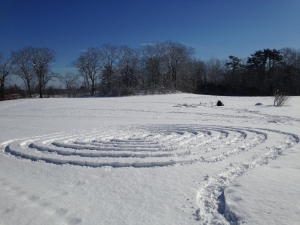
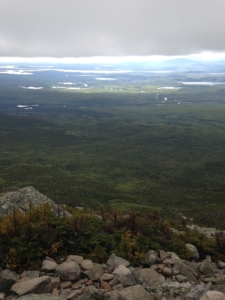
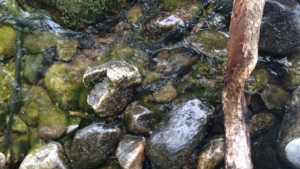
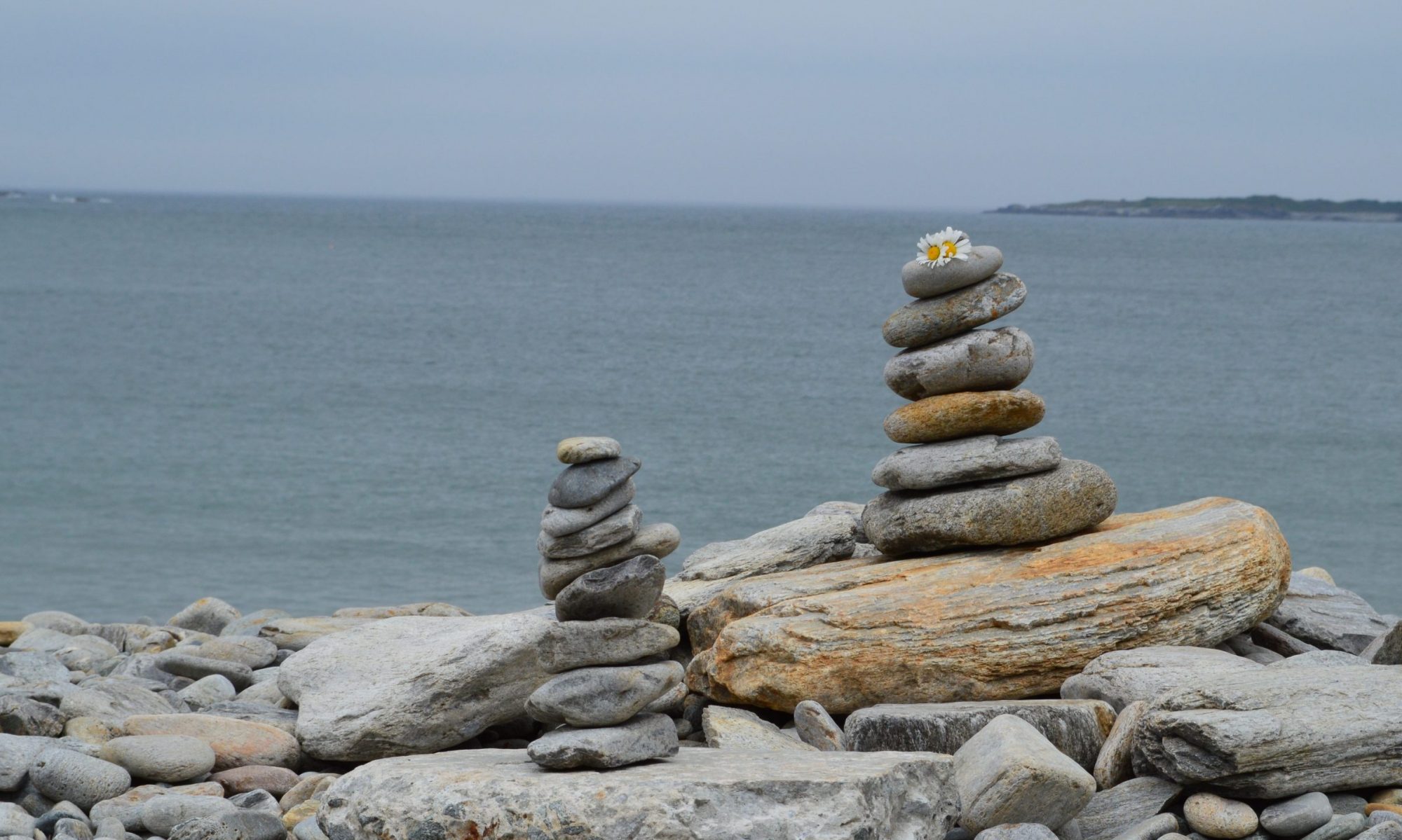
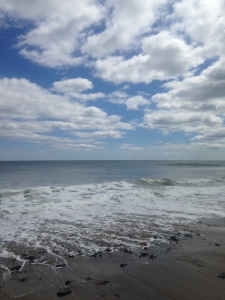
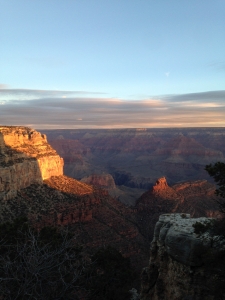
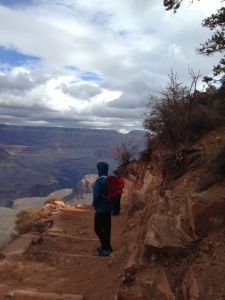 descended hugged the canyon wall down long, steep switchbacks. On the way down, I was kept busy struggling to keep my balance in the gusty wind and trying to take in this new perspective of the steep canyon walls. On the way back up the trail, I had a chance to appreciate its construction. The trail is a masterpiece of engineering, built by engineers, miners, and CCC (Civilian Conservation Corps) crews in the 1920s and 1930s. The trail was sturdy, well-defined and comfortable both descending and ascending. I have built trails with rock before, tasked with balancing protection of the natural resource with protection of human hikers in Kenai Fjords National Park and Tongass National Forest. Building with rock is both satisfying and endlessly deceiving. It hints at permanence but is no less malleable and fallible than any other element at our disposal. It is very hard to get it right and, even well placed, rocks will dislodge, break, wiggle and erode when water, temperature and gravity exert their influence. In this case, the trail was still in great condition and it welcomed us to terrain that would have otherwise been inaccessible without wings or sticky lizard pads on our hands and feet.
descended hugged the canyon wall down long, steep switchbacks. On the way down, I was kept busy struggling to keep my balance in the gusty wind and trying to take in this new perspective of the steep canyon walls. On the way back up the trail, I had a chance to appreciate its construction. The trail is a masterpiece of engineering, built by engineers, miners, and CCC (Civilian Conservation Corps) crews in the 1920s and 1930s. The trail was sturdy, well-defined and comfortable both descending and ascending. I have built trails with rock before, tasked with balancing protection of the natural resource with protection of human hikers in Kenai Fjords National Park and Tongass National Forest. Building with rock is both satisfying and endlessly deceiving. It hints at permanence but is no less malleable and fallible than any other element at our disposal. It is very hard to get it right and, even well placed, rocks will dislodge, break, wiggle and erode when water, temperature and gravity exert their influence. In this case, the trail was still in great condition and it welcomed us to terrain that would have otherwise been inaccessible without wings or sticky lizard pads on our hands and feet.
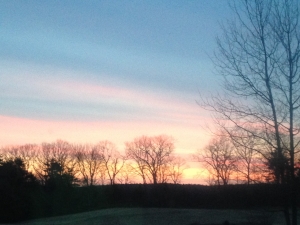 Rising with the sun,
Rising with the sun, Approaching the woods, a gentle wind stirred the air. Snowballs, crystals, fairy dust, and wonder rose from the tree branches before falling to the ground lightly and playfully. The field was covered in a full, fresh layer of snow. It looked like winter but the temperature of the air and the depth of blue in the sky hinted towards spring. This snow was not destined to last long. It is late winter and the season is more fickle than ever.
Approaching the woods, a gentle wind stirred the air. Snowballs, crystals, fairy dust, and wonder rose from the tree branches before falling to the ground lightly and playfully. The field was covered in a full, fresh layer of snow. It looked like winter but the temperature of the air and the depth of blue in the sky hinted towards spring. This snow was not destined to last long. It is late winter and the season is more fickle than ever. 

